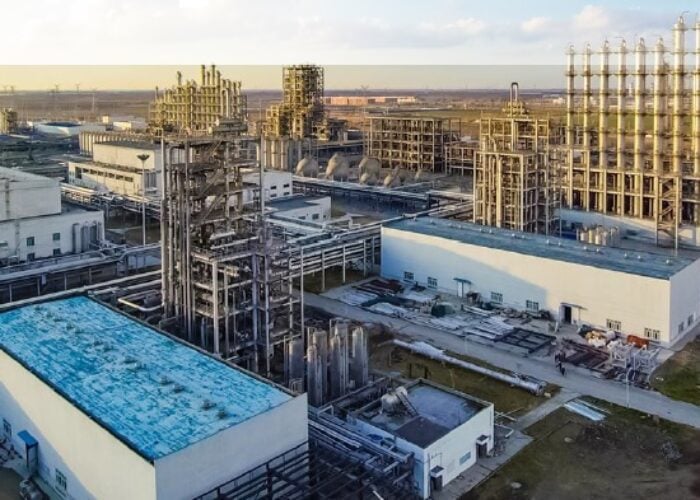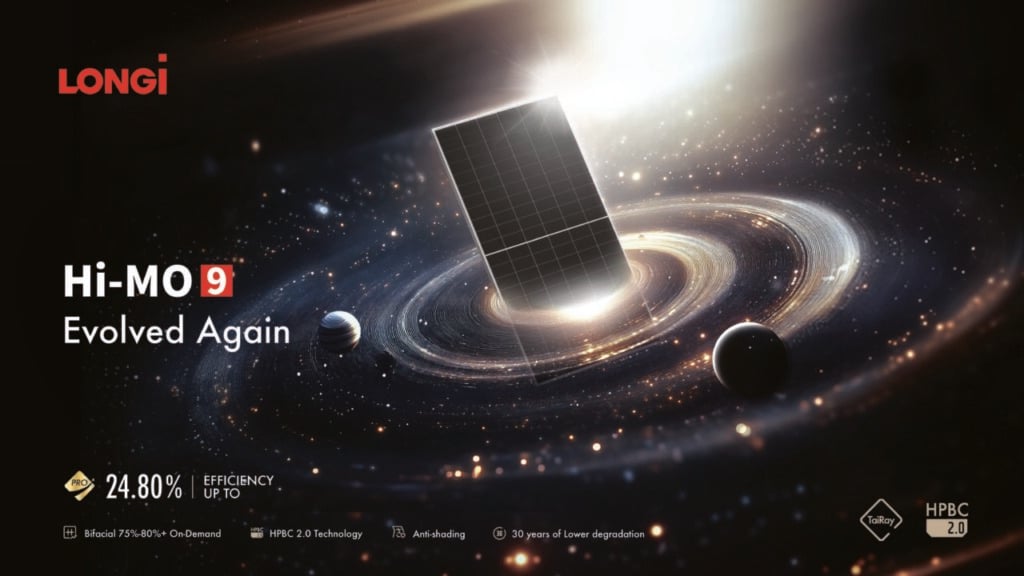
At Intersolar 2025 in Munich earlier this month, Chinese manufacturer LONGi showcased the Hi-MO 9, the latest in its line-up of high-efficiency back contact PV modules. During the show Francois Cui, president of LONGi Europe, met with PV Tech to discuss the module’s key features and why the company is betting big on back contact technology as the future of high-efficiency PV modules.
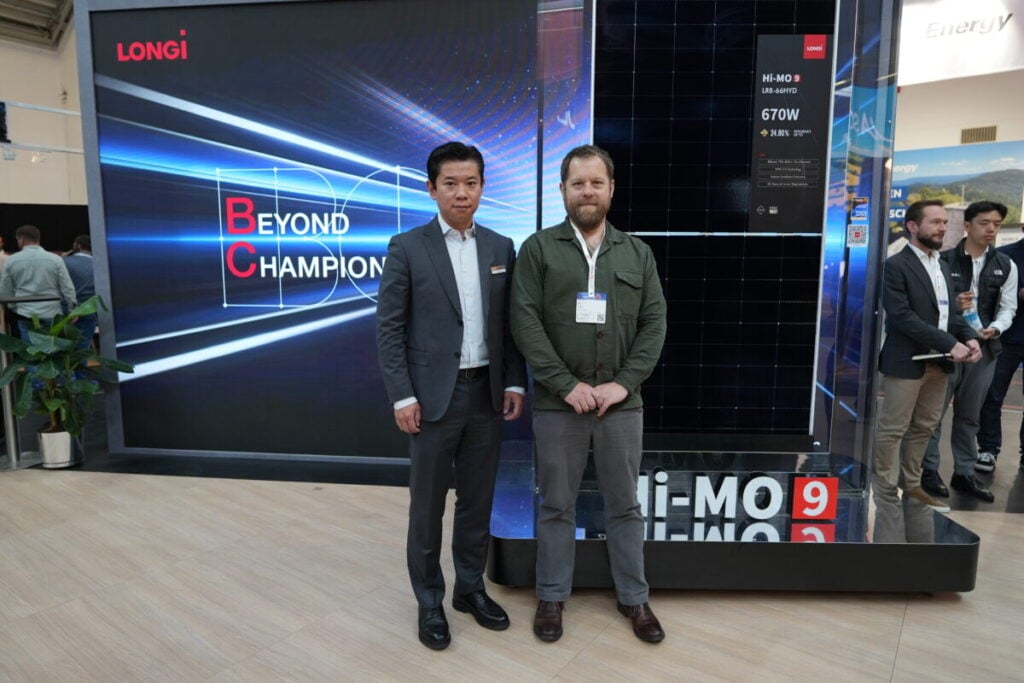
PV Tech: What are some of the key features of the Hi-MO 9 V2 modules? How do they compare to LONGi’s other Hi-MO products?
Try Premium for just $1
- Full premium access for the first month at only $1
- Converts to an annual rate after 30 days unless cancelled
- Cancel anytime during the trial period
Premium Benefits
- Expert industry analysis and interviews
- Digital access to PV Tech Power journal
- Exclusive event discounts
Or get the full Premium subscription right away
Or continue reading this article for free
Francois Cui: The new LONGi Hi-MO 9 module series represents the next evolution in LONGi’s high-efficiency module lineup, built on HPBC 2.0 technology. This module is engineered to meet the growing demand for higher power output, reliability and improved performance in utility-scale PV projects across Europe and beyond. With a 24.8% conversion efficiency and 670W output, Hi-MO 9 outperforms mainstream TOPCon modules by 40W, increasing PV plant value.Compared to previous models it offers higher energy density per module, higher bifaciality, which means reduced BOS [balance of system] costs and faster project ROI, and is more tailored for utility-scale deployment, particularly in markets that prioritise land-use efficiency and high annual energy yield.
What are the technical specifications of the two products? How is each specialised to work in the utility-scale and distributed generation sectors?
At LONGi, we’ve strategically developed two flagship product lines to meet the distinct needs of the utility-scale and distributed generation (DG) segments: the Hi-MO 9 and the Hi-MO X10, respectively. While both Hi-MO 9 and Hi-MO X10 utilise LONGi’s advanced HPBC 2.0 technology, Hi-MO 9 is optimised for maximising energy yield and minimising LCOE in large-scale utility projects through its high power, efficiency and bifaciality. In contrast, Hi-MO X10 prioritises safety, shade tolerance and aesthetic integration for the distributed generation sector, offering high efficiency and reliability for rooftops and smaller commercial installations.
In short, we’ve designed these products not as one-size-fits-all solutions but with dedicated value propositions for their target segments. This ensures our partners can choose the right module for their specific project needs, whether rooftop or large-scale field deployment. Each product line is tailored to optimise ROI, reliability and site-specific performance for its respective segment.
Why did you develop separate products for these two sectors? Do you expect considerable growth in the utility-scale or distributed generation sector in the years to come?
It’s a strategic decision to develop separate product lines like Hi-MO 9 and Hi-MO X10, driven by the distinct and often contrasting requirements of the utility-scale and distributed generation sectors. With the aim of tailoring specific solutions for our customers’ needs, we evaluated different priorities and system requirements. For utility-scale projects, for example, the primary focus is on minimising the LCOE. This translates to a need for modules with the highest possible power output and efficiency to maximise energy generation per unit area, thereby reducing land usage and overall project costs. Reliability and long-term performance are also critical for these large infrastructure projects. Bifaciality becomes highly advantageous in ground-mounted systems to further enhance energy yield.
Considerable growth is expected in both the utility-scale and DG sectors in Europe in the years to come, although the pace and specific drivers may vary. Europe’s utility-scale solar sector is anticipated to continue its growth trajectory. In 2024, the EU saw a significant increase in annual solar generation, reaching a record 66GW of new capacity additions. As for policy support, ambitious renewable energy targets set by the EU and individual member states, such as the REPowerEU plan aiming for over 700GW of solar PV capacity by 2030, will be a major driver. When it comes to cost competitiveness, the declining costs of solar technology make utility-scale projects an increasingly attractive and economically viable option for meeting large-scale energy demands. Last but not least, investments in grid infrastructure and cross-border interconnectors will be crucial to integrate large amounts of utility-scale solar power efficiently.
Why have you made back contact technology such a priority for the company? How did you achieve the latest cell efficiency milestone, and how much further do you think the technology can go?
LONGi has made back contact technology, particularly its proprietary Hybrid Passivated Back Contact (HPBC) technology, a significant priority for several key reasons: the absence of gridlines maximises sunlight absorption, leading to greater energy conversion and efficiency. Also, the improved aesthetics from the clean, uniform appearance are desirable for residential and commercial installations. Enhanced reliability from the reduced shading losses and potentially better temperature coefficients contributes to long-term performance. LONGi believes that back contact technology has a greater potential for future efficiency enhancements compared to other mainstream technologies like TOPCon.
LONGi has recently achieved two important world record milestones: The photoelectric conversion efficiency of its independently developed Hybrid Interdigitated-Back-Contact (HIBC) crystalline silicon solar cell has reached 27.81%, pushing the exploration of the limits of monocrystalline silicon photovoltaic cells to a new height. The second world record is for a two-terminal crystalline silicon-perovskite tandem solar cell that has achieved a conversion efficiency of 34.85%, certified by the U.S. National Renewable Energy Laboratory (NREL). LONGi will remain unwavering in its commitment to technological innovation, leveraging self-developed breakthroughs and original technologies to accelerate the global energy transition.
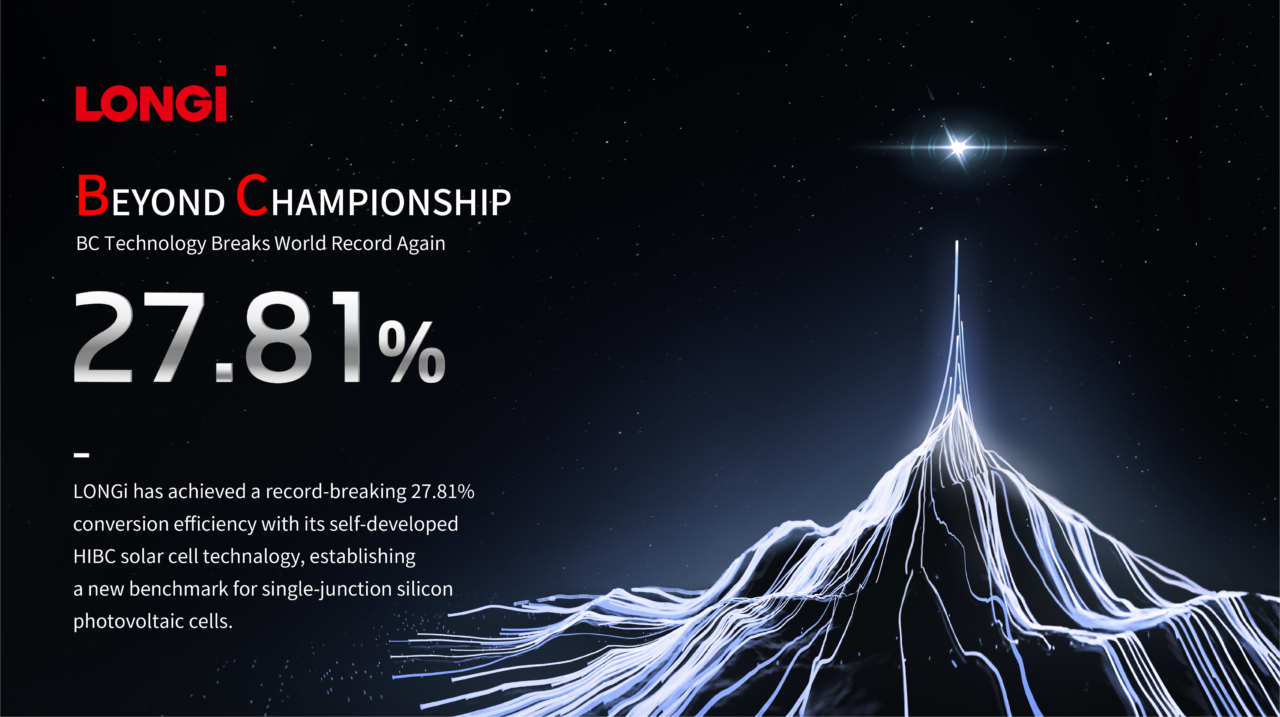
In January, your chairman Zhong Baoshen told PV Tech that LONGi would look to upgrade the first generation of back contact modules rather than build new manufacturing capacity specifically for the second generation. Has this upgrade work been successful, and why was this a priority?
Yes, the upgrade work on LONGi’s first generation of back contact modules has been successful and is a current priority. Evidence of Successful Upgrade HPBC 2.0 Rollout: LONGi has successfully upgraded its manufacturing facilities, including its “Lighthouse Factory” in Jiaxing, China, to produce modules featuring the second generation of its back contact technology, HPBC 2.0. The upgraded modules with HPBC 2.0 demonstrate significant improvements. For example, the upgraded Hi-MO 9 module achieves a 24.8% conversion efficiency and a maximum power output of 670W, outperforming mainstream TOPCon modules. The HPBC 2.0-based modules feature enhancements like improved anti-dust properties, shade resistance, and fire resistance, indicating a successful upgrade focused on real-world performance. LONGi’s HPBC 2.0 technology has received the “EUPD Research Top Innovation Award”, recognising its potential and advancements in efficiency and energy yield. LONGi has been actively expanding its back contact module production capacity, indicating confidence in the upgraded technology and its market demand. The global order reserves for BC modules exceed 40GW.
LONGi prioritised upgrading its existing back contact module manufacturing capacity to expedite the deployment of its superior HPBC 2.0 technology, leverage existing resources, and efficiently meet the growing market demand for high-performance solar modules. The successful rollout and enhanced features of the upgraded modules demonstrate the effectiveness of this strategy.
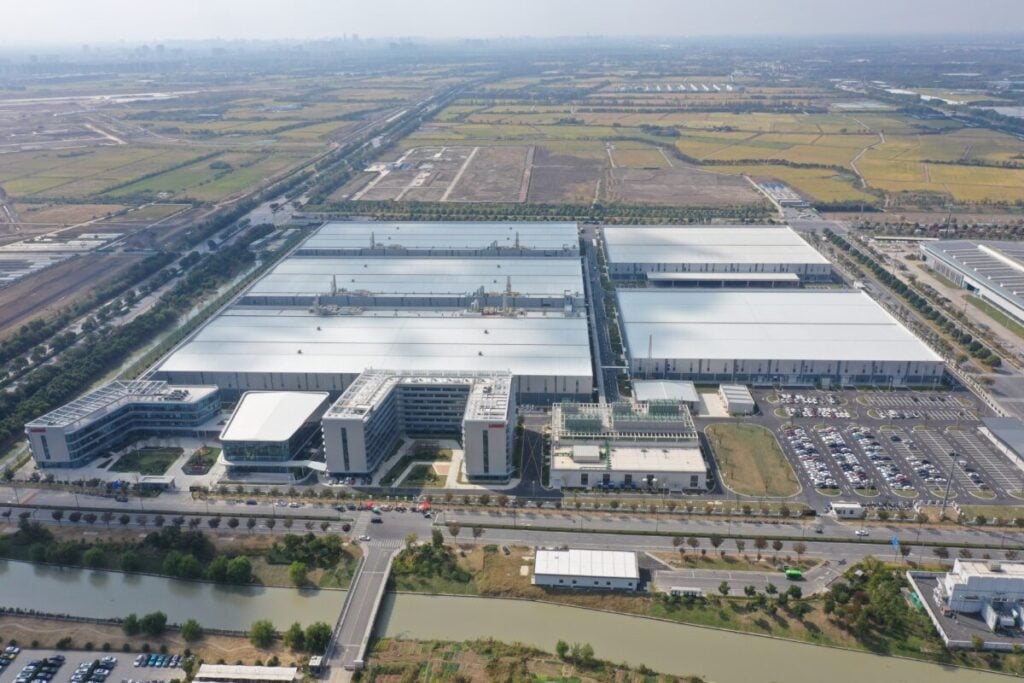
At what stage is your Lighthouse 2.0 facility, and how does it compare to your first Lighthouse facility? Why is the development of these facilities important for the company?
LONGi currently has one publicly recognised “Lighthouse” facility, its Jiaxing Production Base, which was designated as a Global Lighthouse Factory by the World Economic Forum (WEF) in December 2023. This makes it the first and only factory in the global PV industry to receive this distinction. Therefore, there isn’t a “Lighthouse 2.0” facility in the sense of a separate, newly built factory with that specific designation. Instead, LONGi has been focused on fully upgrading its existing Jiaxing Lighthouse Factory to incorporate its latest technologies and intelligent manufacturing processes, particularly for the production of HPBC 2.0-based modules. When initially recognised, the Jiaxing facility had already implemented over 30 Fourth Industrial Revolution (4IR) use cases. This included AI-powered quality inspections, intelligent warehousing and AI-driven cell allocation, leading to significant improvements such as: 43% increase in product quality and reliability, 84% reduction in product production and delivery cycle, 20% decrease in overall energy consumption per unit, 28% reduction in unit manufacturing costs and 43% cut in yield loss.
What of the wave of patent lawsuits that have affected the solar industry so far this year? Do you think lawsuits like these will become more common in the PV industry, and what impact has this had on your business and operations?
As a major player with substantial R&D investment, LONGi recognises the importance of protecting its innovations. Its active participation in these legal proceedings reflects the increasing significance of intellectual property in the evolving solar industry. While the direct financial and operational impacts will depend on the outcomes of the ongoing cases, it’s clear that patent disputes are now a significant factor shaping the competitive landscape of the PV sector. Patent litigation is a natural result of a maturing and increasingly innovative industry. While we expect more IP disputes industry wide, LONGi maintains a strong global patent portfolio and prefers resolution over escalation. Our operations have not been significantly affected, and we remain focused on advancing technology responsibly and competitively.
At LONGi, we believe that the energy transition is not just a technological challenge—it’s a shared global responsibility. Whether through cutting-edge module innovation, smart manufacturing, or responsible IP stewardship, we’re focused on delivering long-term value to our partners and accelerating Europe’s clean energy future.



